These Korean beef bowls (With Gochujang Sauce) are a satisfying and budget-friendly dinner that takes just 30 minutes to prepare.
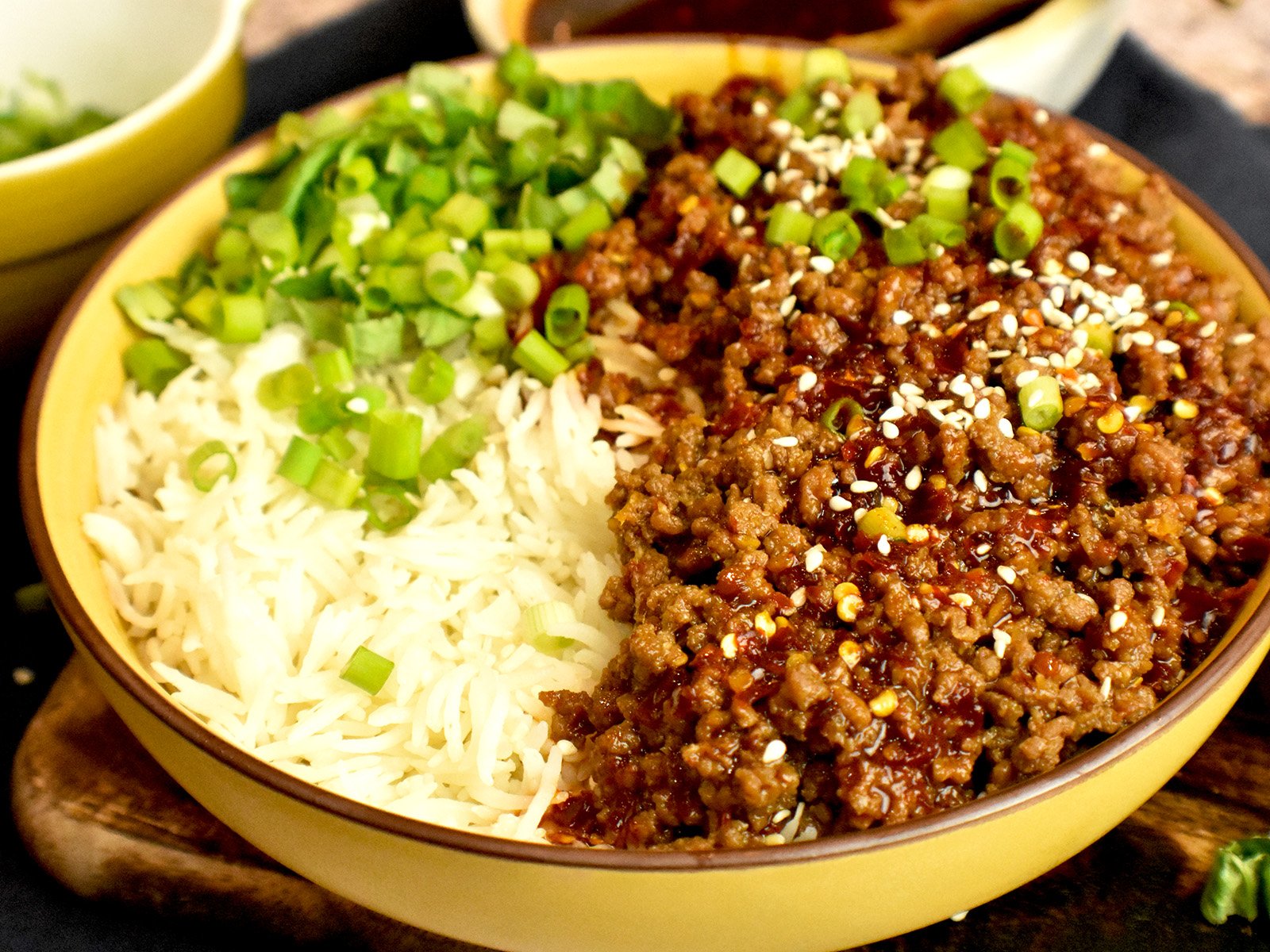
WANT TO SAVE THIS RECIPE?
These Korean beef bowls are a quick and easy variation of traditional bulgogi, which is prepared with thinly sliced marinated beef. An adaptation of a recipe from mykoreanitchen.com, these bowls are packed with flavor and pair perfectly with plain basmati rice or Japanese garlic-fried rice.
Jump to:
Why you'll love this recipe
- Quick and easy recipe: Traditional bulgogi can be time-consuming, requiring a long marinating time and extensive preparation. This 30-minute variation delivers all the same flavor in a fraction of the time.
- More affordable than traditional bulgogi: Ground beef is significantly cheaper than the conventional rib-eye, sirloin, or tenderloin typically used in bulgogi recipes.
- Perfect for meal prep: This freezer-friendly recipe is ideal for preparing meals in advance, just like my kofta recipe.
- Customizable: Check out all the fun ways you can customize these Korean beef bowls in the 'substitutions and variations' section below.
- Great for entertaining: Set up a bowl bar and serve the components separately. Your family and friends will have a ball creating their bowls.
Ingredient notes
The beef

- Extra-Lean Ground Beef: Opt for lean ground beef (85/15) for the best flavor with minimal excess grease.
- Sesame Oil: Dark toasted sesame oil adds an authentic nutty flavor that's essential to Korean cuisine.
- Cooking Oil: Too much sesame oil can be intense, so I add Avocado Oil for extra volume. Any oil that tolerates high heat, such as Canola or Sunflower, can also be used.
- Garlic: Fresh minced garlic provides aromatic depth. For optimal results, use fresh garlic rather than pre-minced garlic or garlic powder in this Korean beef bowl recipe.
- Ginger: Adds a zesty, warming note that elevates the entire dish. Fresh ginger has the brightest flavor, but ground ginger is a suitable substitute.
The marinade

- Soy Sauce: Provides the savory umami foundation for the sauce. Refer to the "substitutions and variations" section below for alternatives.
- Brown Sugar: Dark brown sugar adds a deep molasses note and balances the salty soy sauce.
- Rice Vinegar: I prefer using seasoned rice vinegar for added flavor. If you can't find any at your local store, plain rice vinegar will do.
- Sriracha: My favorite seasoning for many recipes, and my marinade wouldn't be complete without it.
- Red Pepper Flakes: Not an essential ingredient, but since I'm used to spicy food, I like to add some to my Korean beef bowl marinade.
The Garnishes

- Basil: I love the aroma and taste of basil in my Korean ground beef bowls.
- Green Onions: Green onions take these bowls from a simple weeknight meal to a great recipe!
- Sesame Seeds: These add a perfect finish and a delicious crunchy texture to Korean Bowls, the best part, in my opinion!
The Gochujang sauce

- Gochujang Paste: This fermented red chili paste is available at Asian grocery stores. It is an integral part of Korean cuisine, adding a significant amount of flavor to any Korean-inspired dish.
- Soy Sauce: I like to add soy sauce to the gochujang for that umami flavor.
- Red Pepper Flakes: I can never have enough spices in my food! You can eliminate or use less of this ingredient depending on your palate.
- Rice Vinegar: A small amount of rice vinegar helps balance the spicy, salty, and sweet flavors of the other ingredients.
- Honey: The honey adds sweetness and thickens the sauce to a perfect consistency.
Please refer to the recipe card at the bottom of this post for the complete list of ingredients, measurements, and detailed recipe instructions.
Substitutions & variations
- Change the vegetables: Add fresh or sautéed carrots, cucumber, bell peppers, and even spinach to your bowls.
- Switch up the meats: ground chicken, ground turkey, and thinly sliced, sautéed meats work very well. For vegans, try this recipe with Impossible Meat.
- Try a different carb base: use white rice as shown, or try the Korean ground beef bowl with some fried rice, garlic rice, or noodles as the base for your bowl.
- Make this a low-carb bowl: Eliminate the Starch and serve the beef over spaghetti squash or cauliflower rice for a lower-carb option. Try the bowls with only vegetables. Shred some napa cabbage, saute some Broccoli or tri-colored bell Peppers, and snap peas.
- Swap the brown sugar for a healthier alternative: Try honey or Swerve brown sugar as a substitute for brown sugar in the marinade.
- Switch up the soy sauce: Use low-sodium soy sauce if you're on a low-sodium diet, or opt for tamari for a gluten-free alternative.
- Try different garnishes: For a crunchy topping, add crushed peanuts and crispy noodles. If you're not in the mood to chop and cut the veggies, add some fresh microgreens.
Step-by-step instructions
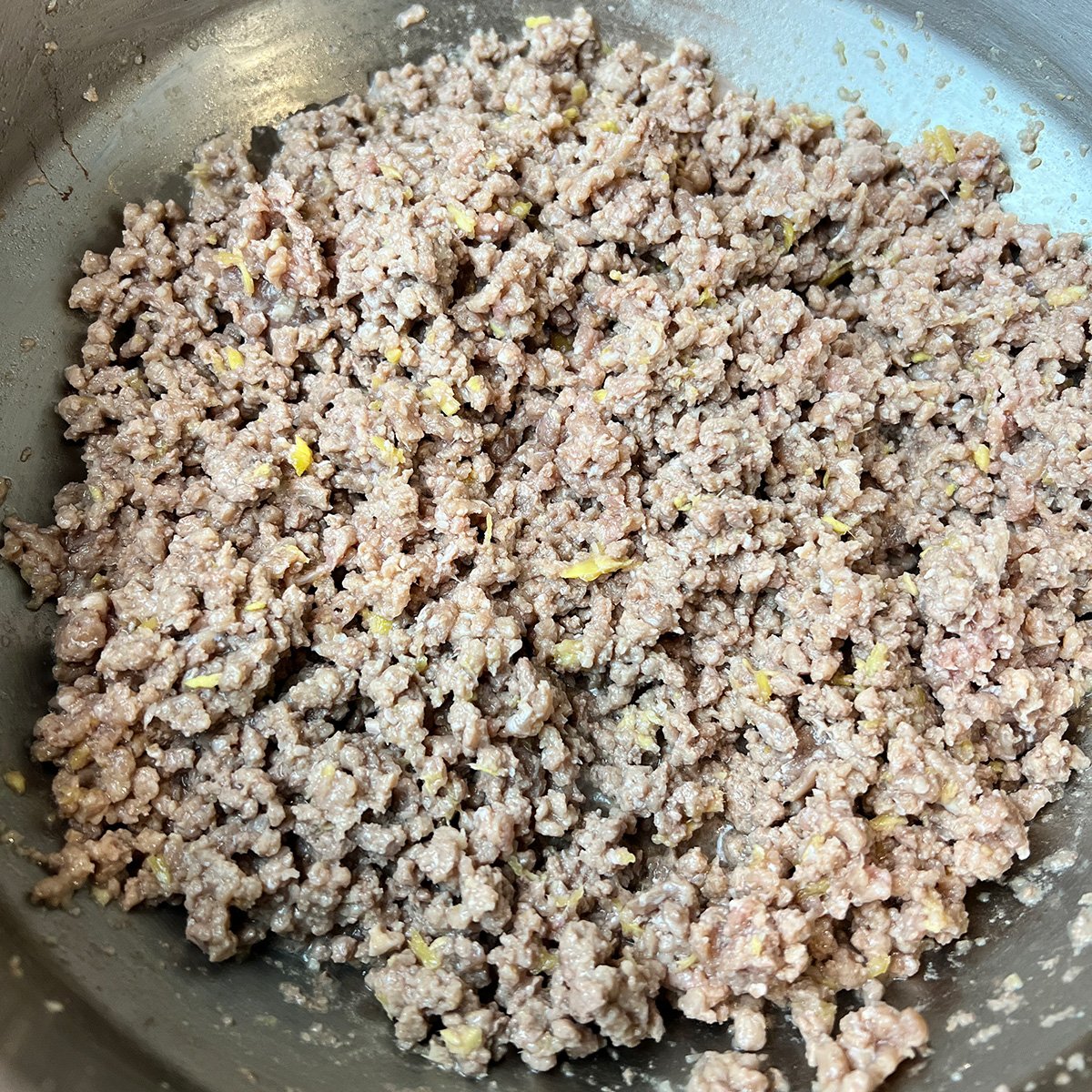
- Step 1: Combine and heat both cooking oils together. Saute the crushed ginger and garlic for about 1 minute, and then add the ground beef and fry until it is no longer pink.
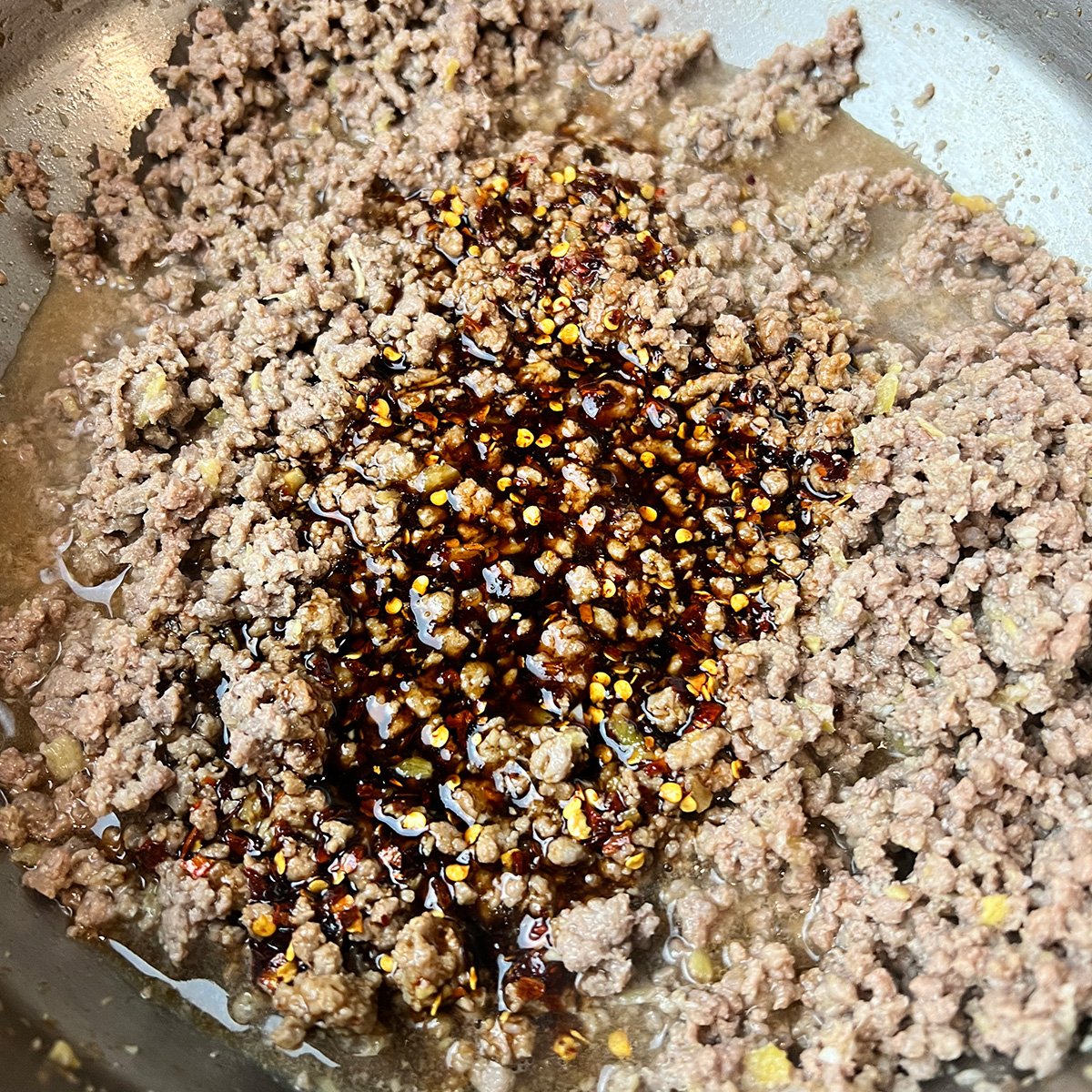
- Step 2: Cover and simmer in its juices for 10 minutes. Prepare the marinade while the meat is cooking, add it to the par-cooked beef, and simmer on low heat for an additional 10 minutes.
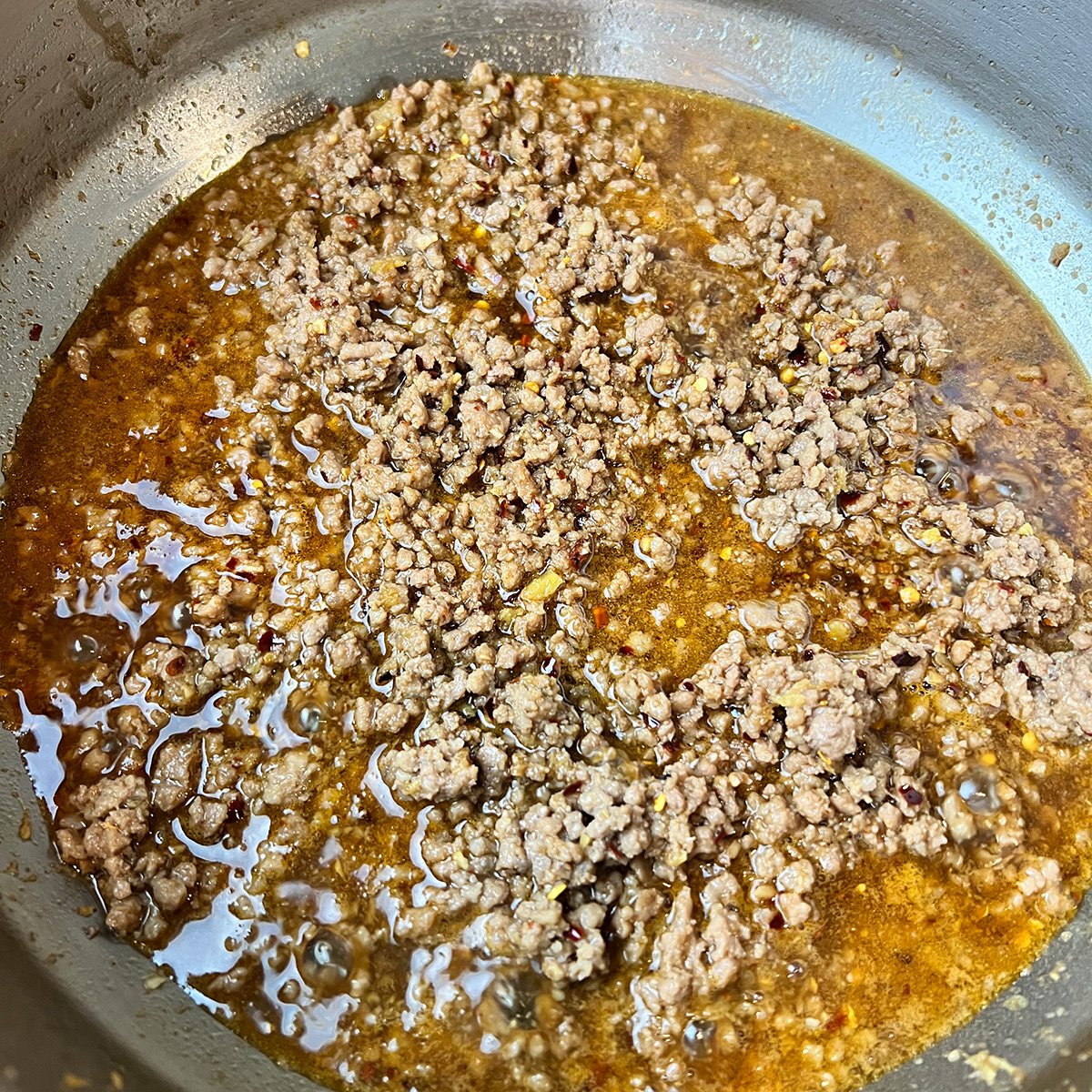
- Step 3: Bring to a boil and cook on high until all the liquid has evaporated.
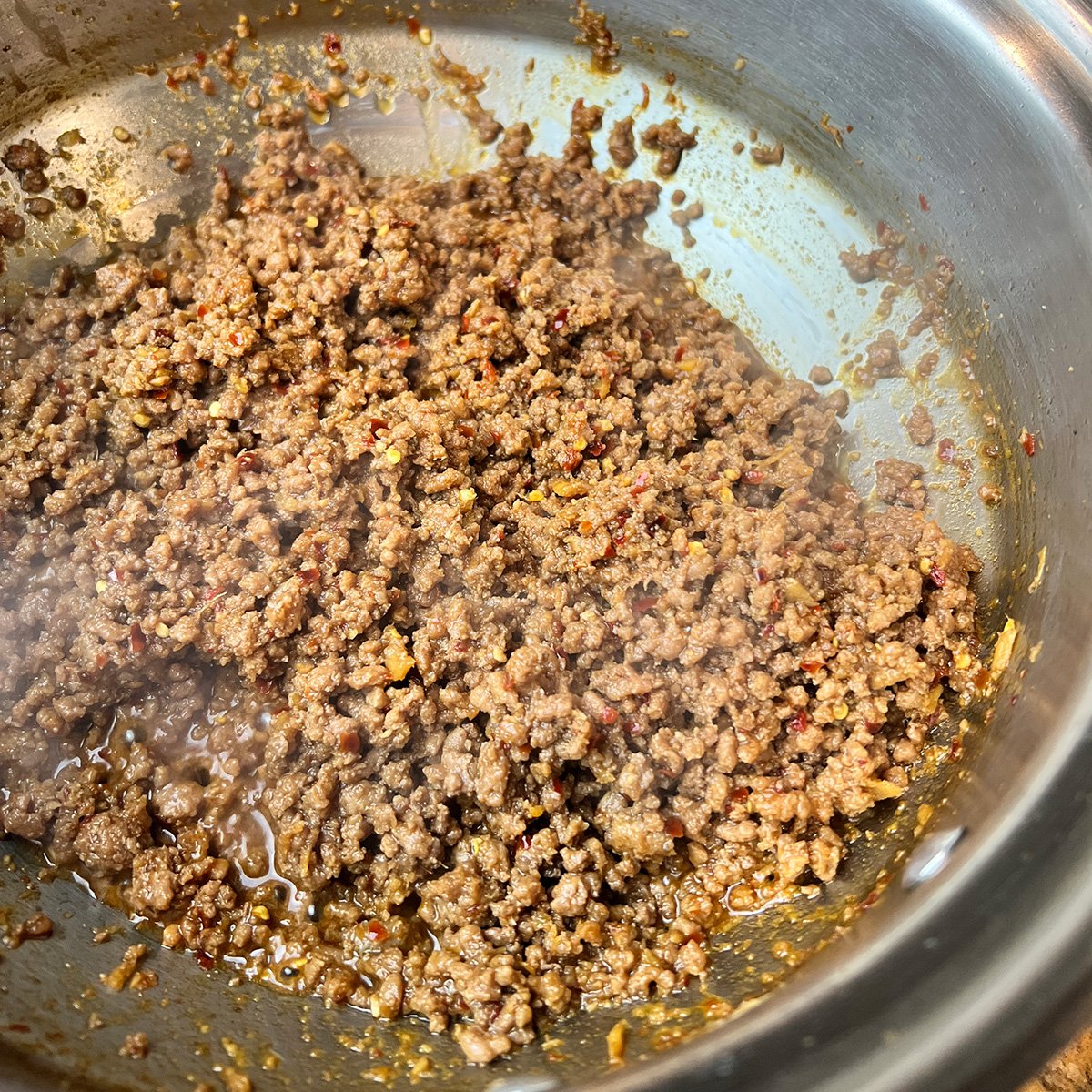
- Step 4: Fry for a few minutes at the end till the meat is medium to dark brown. Plate, garnish, and enjoy your Korean beef bowls.
Expert Tips
- Repurpose your leftovers: If you have any leftover meat after dinner is over (you probably won't), use it to make bulgogi spring rolls, bulgogi tacos (yes, that's a thing), bulgogi pizza, or fill it in lettuce and make yourself a healthy wrap for lunch the next day.
- Save time: Cook your rice, sauce, and beef simultaneously so
everything finishes at the same time. I usually cook my rice in my Instant Pot and cook the meat and sauce simultaneously using two different burners on my stove. - Use the right beef: Too much fat makes the meat taste heavy, while less fat results in dry, flavorless meat. For optimal results, use meat with a fat content of 15%.
- Double the Sauce: Making extra gochujang sauce takes no additional time and comes in handy for cooking stir-fries or marinating meats.
Recipe FAQS
Cook the beef in a Wok or pot with a heavy base and tall sides. This helps conduct heat well, and the tall sides make it easy to stir the beef constantly so it cooks evenly.
Store the beef mixture and rice separately in airtight containers in the refrigerator for up to 3 days. For meal prep, portion the beef and rice into individual containers and top with fresh garnishes just before eating.
Can I freeze this dish?
Yes! Both the cooked beef mixture and rice can be frozen for up to 3 months. Thaw overnight in the refrigerator and reheat gently on the stovetop or in the microwave.

Other beef recipes you may like
Did you try this recipe? Leave a ⭐️⭐️⭐️⭐️⭐️ rating below and share it on Instagram, Facebook, and Pinterest!
Korean Beef Bowls (With Gochujang Sauce)
WANT TO SAVE THIS RECIPE?
Ingredients
Beef
- 1 lb extra lean ground beef (see notes)
- ½ tablespoon sesame oil
- 1 tablespoon avocado oil (see notes)
- 1 tablespoon garlic paste
- 1 tablespoon ginger paste
Marinade
- ¼ cup soy sauce
- ¼ cup dark brown sugar (see notes)
- 1 tablespoon rice vinegar
- 1 tablespoon sriracha
- 1 tablespoon red chili flakes (see notes)
Toppings
- 2 tablespoon chopped basil
- 2 tablespoon chopped green onions
- 2 tablespoon sesame seeds
Gochujang Sauce
- ¼ cup gochujang sauce
- ¼ cup soy sauce
- 1 teaspoon red chili flakes (see notes)
- 2 tablespoon rice vinegar
- ⅛ cup honey
Instructions
Beef Bowls
- Combine and heat both oils together. (see notes)
- Saute the garlic and ginger paste for 1 minute.
- Add the ground beef, frying till it is no longer pink, cover and simmer in it's own juices for 10 minutes.
- Prepare the marinade while the meat is cooking.
- Add the marinade and simmer the mixture on low heat for another 10 minutes.
- Uncover and cook on high till all the liquid evaporates, sauteing for a few minutes at the end till the meat is a medium to dark brown.
- Serve with the rice, garnishes, and gochujang sauce.
Gochujang Sauce
- Mix all of the ingredients in a saucepan.
- Whisk till well combined.
- Bring to a boil and then simmer till slightly thickened. (see notes)


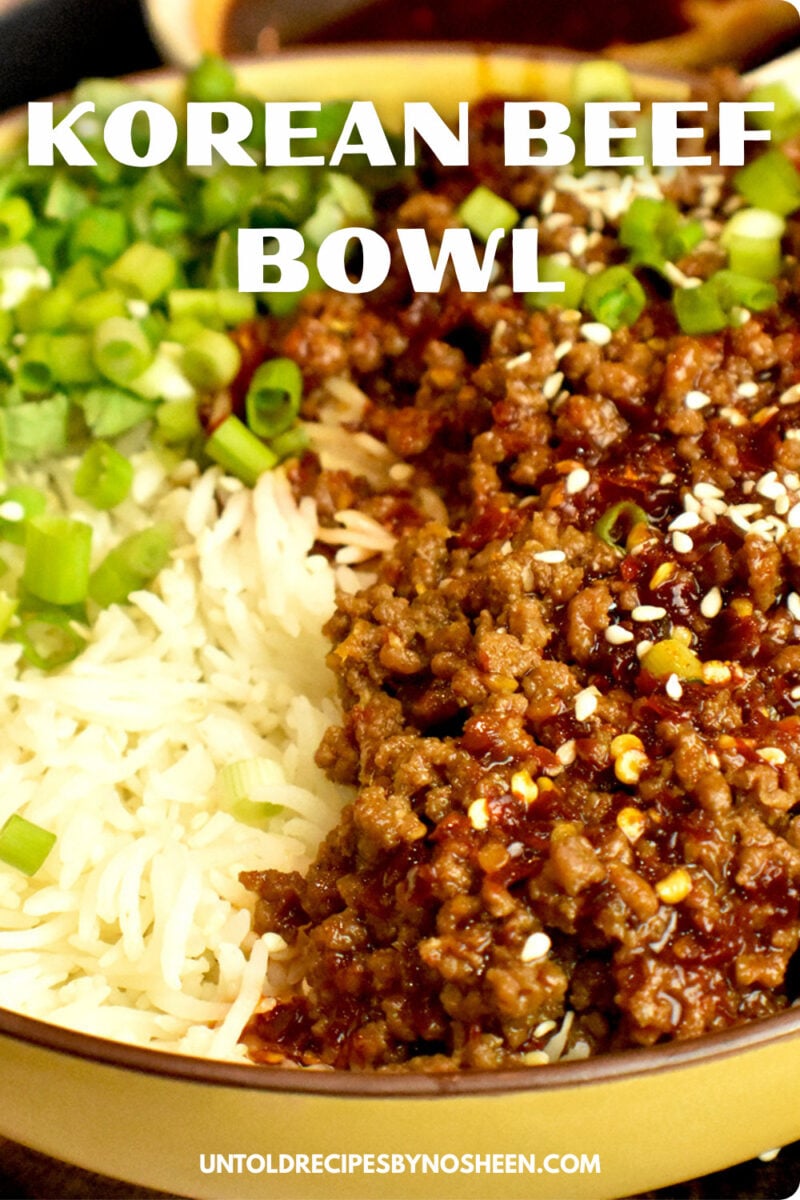
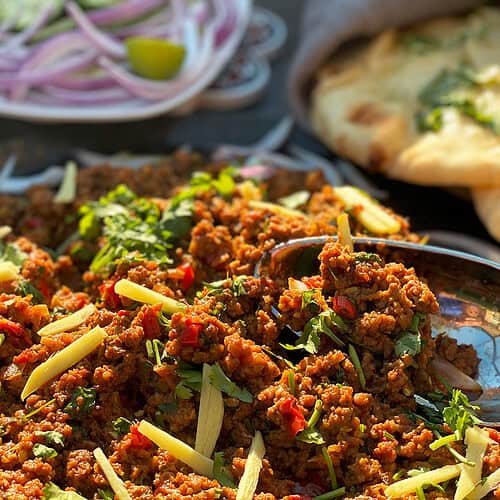
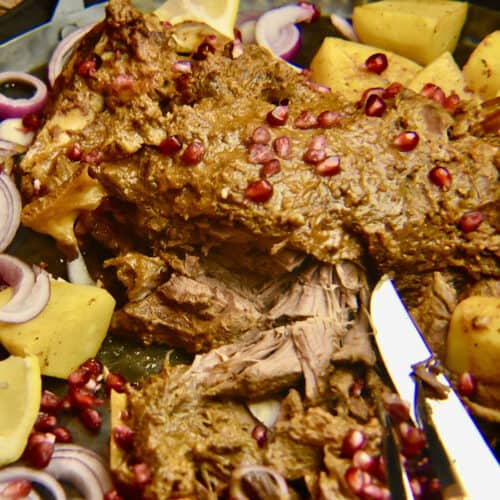
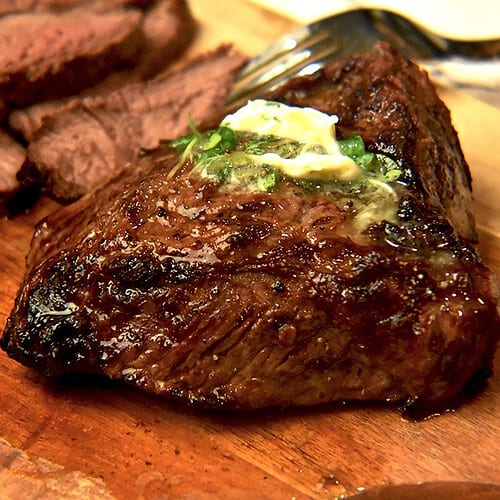
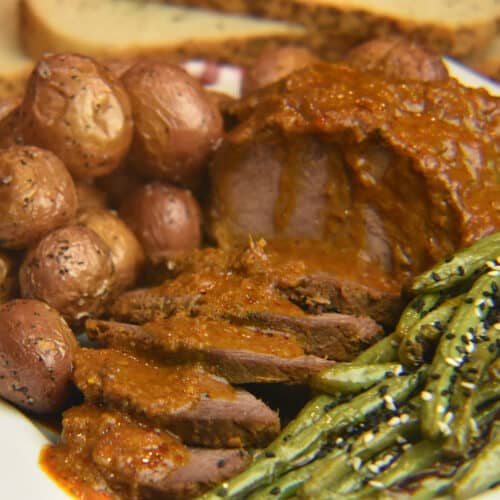
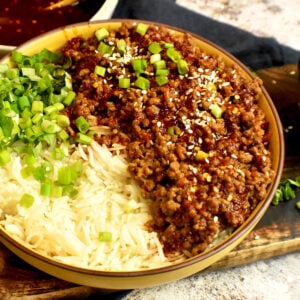



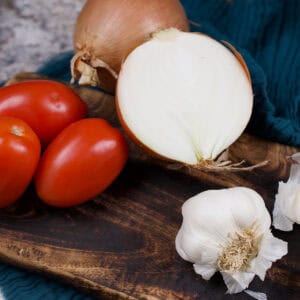
sandra axelrod
This sounds so delicious that I can't wait to try it! Just have to pick up some ground beef
Nosheen Babar
Let me know how it goes!
Saima Kamal
Loved the flavor, but felt it was a tad dry. Would have liked some more sauce to go with the rice. Otherwise, a great weeknight meal ?
untoldrecipesbynosheen
Hi Saima. Thank you for the review and suggestion. I'll work on some options for a sauce so you can enjoy it the way you like it .
Aasiya Sachwani
Nosheen - I made this for a quick dinner (had been doing a detailed clean in my kitchen and so had very little time). I loved it! It was SO flavourful and so easy to make ?
Nosheen Babar
Hi Aasiya!
I'm so glad you tried and liked the recipe.It's one of my go-to's for a quick dinner as well.